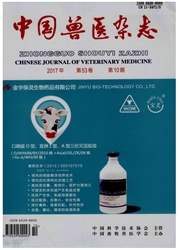

 中文摘要:
中文摘要:
为研究氯胺酮对氨基酸类神经递质的影响,明确其中枢作用机制,为今后科学合理用药提供依据,试验将Wistar大鼠大脑皮层神经元进行离体培养,在培养第7天加入1μg/m L、3μg/m L、5μg/m L氯胺酮,分别在加药后0、5、10、15、20、25、30、45、60、90、120 min取上清液40μL检测Glu、Asp、Gly和GABA的含量。不同剂量氯胺酮作用于神经细元后Asp都显著升高,Gly和GABA都显著降低,且3μg/m L和5μg/m L氯胺酮作用效果明显,而1μg/m L作用后Glu的含量升高,3μg/m L、5μg/m L却降低。结果表明氯胺酮直接作用于神经元后,通过抑制兴奋性氨基酸神经递质Glu和Asp的合成和分泌及增强抑制性神经递质Gly和GABA的释放来达到麻醉作用。且氯胺酮的麻醉作用强弱与剂量大小有一定的相关性。
 英文摘要:
英文摘要:
To study the effects of ketamine on amino acid neurotransmitters and to clarify the mechanism of central nervous system,the Wistar rat cortical neurons were cultured in vitro with the addition of,1 μg/m L,3 μg/m L,5 μg/m L ketamine in the seventh day.Supernatant was couecred for the detection of the content of Glu,Asp,Gly and GABA,after 0,5,10,15,20,25,30,45,60,90 and120 min.The results showed that Asp increased significantly at different doses of ketamine,and Glu and GABA were significantly lower.3 μg/m L and 5 μg/m L ketamine had obvious effects,Further more,Glu content was increased after the addition of 1 μg/m L ketamine.The results showed that ketamine acted directly on nerve cells by inhibiting excitatory amino acid neurotransmitter synthesis and secretion of Glu and Asp and enhancied the inhibitory neurotransmitter GABA Gly and release to achieve a narcotic effect.These data suggest that there is an association between the anesthesia activty of ketamine and the doses used.
 同期刊论文项目
同期刊论文项目
 同项目期刊论文
同项目期刊论文
 期刊信息
期刊信息
